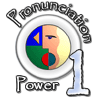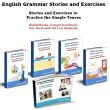
Learning to pronounce English words correctly can be one of the hardest parts of learning English, especially if there are sounds that your native language doesn’t have or you tend to get tripped up on tricky vowel pronunciation
Just see how “way,” “weigh” and “whey” are all said the same, for example, while “comb,” “bomb” and “tomb” are all pronounced differently.
That’s why I have 15 tips for you, to help you pronounce English words better.
Contents
- 1. Learn to listen.
- 2. Learn with the Best English Pronunciation Dictionaries Online
-
- Google Translate
- FluentU
- Forvo
- Merriam-Webster Dictionary
- WordReference
- Oxford Learner’s Dictionaries
- Collins Online Dictionary
- 3. Notice how your mouth and lips move.
- 4. Pay attention to your tongue.
- 5. Break words down into sounds.
- 6. Add stress to sounds and words.
- 7. Ask yourself which dialect of English you want to learn.
- 8. Exaggerate certain sounds (make them bigger).
- 9. Write out difficult words by their sounds.
- 10. Write down what you hear.
- 11. Practice with tongue twisters.
- 12. Use pronunciation podcasts and videos.
- 13. Record yourself.
- 14. Practice with a buddy.
- 15. Speak as much as you can.
Download:
This blog post is available as a convenient and portable PDF that you
can take anywhere.
Click here to get a copy. (Download)
1. Learn to listen.
Before you learn how to speak, you’ll need to learn how to listen. Some sounds can be hard to tell apart when you’re listening. Did the speaker sleep or slip? Did he hurt his chin or his shin? If you can hear the difference, it will be easier to speak the difference.
There are many guides to get you started in learning to listen. We have some great articles here about learning to listen from movies, songs and music and podcasts. You can also find listening exercises online, like this one from Rong-chang.
The pronunciation practice at Many Things is really slick, especially its huge selection of lessons on minimal pairs. Minimal pairs are pairs of words like sleep and slip, that are only different by one sound. You can click on each word to hear a complete sentence with each, then quiz yourself in the second box and click the correct answer.
2. Learn with the Best English Pronunciation Dictionaries Online
You probably already use a dictionary to translate English words, but online or digital dictionaries can offer many additional benefits, including pronunciation guides. These kinds of dictionaries can be one of the most useful tools you can have for practicing English pronunciation—best of all, they’re available online for free!
Here are some of the best pronunciation dictionaries you can find and use online.
Google Translate
Website | iOS | Android
You may have already used Google Translate during your English studies. Google Translate is an easy-to-use translator that also provides pronunciation guides for single words and whole sentences. As soon as you get to Google Translate’s interface, you can look up any word and it will give you a number of definitions and an audio pronunciation.
If you’re just looking for pronunciation help, type in Google search “how to say (insert word).” You will get both an audio pronunciation guide (which you can slow down) and a visual guide that shows how your mouth should move when saying the word.
FluentU
Website | iOS | Android
Many dictionaries don’t have pronunciation recordings made by an actual native speaker, and most don’t give you good examples of how to use words in context. Dictionaries can also be inefficient to use since you can’t know which definition out of several possibilities you’re looking for.
FluentU’s video and audio dictionary attempts to correct these problems. The program has many videos that give you context and let you hear words in natural situations, like in movie trailers, commercials, inspirational talks, music videos and more. It uses these videos to support its dictionary and give you specific definitions right from the subtitles of a video.
For example, when I did a search within the program for “date,” here’s what the program showed me:
But if I’m watching a clip from “Friends” and I want to know what Monica means when she says “date,” I can hover my mouse over the word and see the correct definition:
If I click on the word, I can even see other videos that use the word with that same meaning for more examples. I can also add the word to a vocabulary list as a flashcard.
FluentU provides native pronunciation at every step of the way: in the transcripts, subtitles, example sentences and even in the quizzes that follow videos and review flashcard decks.
Forvo
Website | iOS | Android
Forvo is a user-generated pronunciation guide in which native speakers submit audio clips of themselves saying certain words or phrases. You can look up a word, learn its definition and listen to how different people from different places say it. There are also pronunciations for whole sentences and phrases as well!
Forvo is well-liked because real people are the ones speaking the words. You can also see how certain speakers are ranked in their pronunciations; the pronunciations with the most likes may be the ones you should focus on.
Because the audio submissions can come from all over the world, you can listen to how the same word is said in different regional accents; the importance of this will be discussed in more detail later on.
Merriam-Webster Dictionary
Website | iOS | Android
Merriam-Webster is also known as “America’s most useful and well-known dictionary.” It’s no surprise then that it’s here on this list! The dictionary offers detailed definitions and information about the words you look up, as well as clear, good-quality audio pronunciations.
You can also download the free app version of this dictionary, which comes with some special features. With the app, you can search for words by speaking them out loud into your device’s microphone—this is great for when you don’t know how to spell a word, but it’s also good speaking practice. If there are any words that interest you, you can save them into your own “favorites” list.
WordReference
Website | iOS | Android
WordReference is a helpful multilingual dictionary. It supports translations for a lot of languages, so if your native language is included, you can find words in English by writing it out in your language, or search for English words and get translations in your language. This is very helpful when you want to make sure you’re getting the right translations.
WordReference also lets you listen to audio pronunciations in different English accents, more than many other dictionaries. Most online dictionaries may just offer one British pronunciation and one American pronunciation, but WordReference also specifies other specific accents such as Irish, Scottish, American Southern and even Jamaican. After you look up a word, you can click on the “Listen” button to pick the accent you want to hear and change the speed of the audio.
Oxford Learner’s Dictionaries
Website | iOS | Android
Oxford’s online dictionary, provided by the well-respected Oxford University Press, is a great resource for beginner learners. Sometimes, dictionaries can offer a lot of information that can make things confusing—Oxford’s dictionary takes out a lot of the confusion and gives you the main things you need. The definitions are written in an easy-to-understand manner and you get plenty of example sentences that show you how the word is used.
The dictionary has two pronunciation options: you can listen to the word spoken in British English or in American English. The pronunciations are done by different male and female humans (not robots!), which can be great for your listening practice.
Collins Online Dictionary
Website | iOS | Android
This dictionary offers most of what the other listed dictionaries have, but with some extra audio features. Once you look up a word, Collins dictionary also provides audio pronunciation of the word in its different forms (such as in past tense or participle form). There are even audio pronunciations for the example sentences that show the word in use, which can be very useful when you want to practice speaking in whole phrases.
Collins dictionary provides slightly different definitions: the first “Collins” definition, the second “British English” definition and the third “American English” definition. With each definition section, you can hear either the British or American pronunciation of the word. In some cases, there may even be a video clip of a real person saying the word!
One thing to note is that the example sentence pronunciations are done by a text-to-speech robot instead of a human. However, the voice doesn’t sound too unnatural or strange, so you can still find these pronunciations helpful!
A dictionary is a study tool that you’ll always want to have around when you’re studying and practicing English. If you ever learn a new word and aren’t sure how to pronounce it, then a dictionary with audio functions can give you immediate help.
3. Notice how your mouth and lips move.
When you speak, you move your mouth. How you move your mouth affects how you pronounce a word.
The first step to correcting your mouth shape is to notice it and pay attention. There are a few ways you can check that your mouth and lips are making the correct shape:
- Use a mirror. This is by far the simplest way to tell what your mouth is doing while you talk.
- Put a finger in front of your lips (like you’re saying “shh”). As you speak, don’t move your finger. You should feel your lips moving away from or pushing against your finger.
Watch other people and notice the shape their mouth and lips make when they talk. Try following along with your favorite TV show or movie. Can you repeat the faces and sounds that the actors are making?
There are guides and pictures online that will help you learn how to move your mouth. Sounds of English has some good explanations for pronouncing specific words. This guide is for people making 3D animations, but the pictures are a great start to understanding how your mouth should look when you speak.
You can also find great videos showing how to properly form the mouth and lip shapes when you’re speaking, like this one from Georgie Harding:
Feeling stiff? Loosen up your mouth and tongue and get ready to practice your speech with this fun warm-up exercise from Howcast!
4. Pay attention to your tongue.
The main difference between rice and lice is in your tongue. When you speak, you move your tongue to make sounds. You probably didn’t even notice that, since you do it without thinking. To improve your English pronunciation, it’s a good idea to check what your tongue is doing.
Some difficult sounds for non-native speakers to make are the letters “L” and “R,” and the sound “TH.” Pronouncing them correctly is all in the tongue!
- To make the “L” sound, your tongue should touch the back of your front teeth and the top of your mouth, just behind your teeth. Try it now: Say the word “light.” Say it a few times. Feel where your tongue is in your mouth. Make sure it touches the top of your mouth. For further practice, here’s a handy resource: scroll down for a free worksheet with L sound sentences and phrases specifically chosen by our linguist. It includes practical tips too that you can apply right away to improve your L sound pronunciation.
- To make the “R” sound, your tongue should not touch the top of your mouth. Pull your tongue back to the middle of your mouth, near where it naturally rests if you weren’t saying anything. As you say the sound, your lips should be a little rounded. Try it now: Say the word “right” a few times. You should feel air blowing between your tongue and the top of your mouth as you speak. You should also feel your lips get a little rounder when you make the sound.
- Now for the “TH” sound. This one may seem strange if you don’t have a similar sound in your native language. To make this sound, put your tongue between your top and bottom teeth. Your tongue should stick out a little between your teeth, and as you push air out of your mouth, let some air escape between your tongue and teeth—that’s what makes the sound. Try it now: Say the word “think.” Repeat it a few times. Make sure you push your tongue between your teeth.
Now that you know where to put your tongue, can you hear the difference?
For a more detailed explanation on how to make those three sounds correctly, watch this video from the Woosong University:
Or check out this one from Club English:
There are many other pronunciation guides on YouTube, so look around for one that helps you master the sounds of the language!
If you can’t figure out what to do with your tongue to make the right sound, try asking someone. Ask them to say a word with that sound, then tell you where they put their tongue. They probably never thought about it before, either!
5. Break words down into sounds.
Words are made up of syllables, or parts. The word “syllable,” for example, has three syllables: syl-la-ble. Turning words into parts can make them easier to pronounce.
To check how many syllables a word has, place your hand flat just under your chin. Say the word slowly. Each time your chin touches your hand, that’s a syllable.
You can even write the word down in parts. Leave a space or draw a line between each syllable (every syllable should have at least one vowel: a, e, i, o, u, y). Now try saying the word. Say it slowly and pause after each syllable. Isn’t that easier?
If you’re having trouble with syllables, you can check out How Many Syllables. This website shows you the syllables in any word you look up, and even shows you how to pronounce it.
6. Add stress to sounds and words.
English is a stressed language. That means some words and sounds are more important than others. You can hear this when you say a word out loud. For example, the word “introduce” is pronounced with a stress at the end, so it sounds like this: “in-tro-DUCE.”
Sometimes where you put the stress in a word can change the word’s meaning. Say this word out loud: “present.” If you said “PREsent,” you are talking about a noun that means either “right this moment” or “a gift.” If you said “preSENT,” you are talking about a verb that means “to give or show.”
There are rules for where the stress goes in each word. Here’s one rule:
- Most two-syllable nouns are stressed on the first syllable, and most two-syllable verbs are stressed on the second syllable.
That’s just like the word “present.” Here’s another example: the noun “ADDress” is the place where you live, and the verb “addRESS” is to speak to someone.
If this all sounds too complicated, don’t worry about memorizing all these rules—the best way to learn is by listening and practicing. Remember that most native English speakers don’t know the rules either, they just say what “sounds right.” With enough practice, you can get what sounds right too.
This video about six common English mistakes goes over word stress in detail in the first point:
Keep watching the rest of the video for other useful tips for avoiding some of the most common English learner mistakes.
Watch this video from mmmEnglish for more information about syllable stress in English:
Sentences have stresses too; some words are more important, and are said with more clarity and strength than the rest of the sentence. Try reading this sentence aloud: “I ate some toast with butter in the morning.”
The sentence should have sounded like this (the bold words are the stressed ones): “I ate some toast with butter in the morning.” Notice how you slow down every time you get to an important word, and quickly pass over the less important ones?
Keep practicing by reading out loud, having conversations and listening well to where others place stress when they speak.
7. Ask yourself which dialect of English you want to learn.
When you speak English, do you want to sound like you’re from America or England? Australia or New Zealand? Maybe Canada or South Africa.
Choosing your dialect of English is one of the first decisions to make on your English-learning journey. First of all, it will determine much of the vocabulary you learn. For example, English speakers in Ireland use different terms for certain things than English speakers in the United States—especially when it comes to slang.
Second, this choice will drastically affect your pronunciation.
The two most common types of English for ESL students are probably American English and British English.
Choosing which type will affect how you pronounce sounds. For example, in America, the “r” sound at the end of a word is much harsher.
And when a “t” appears in the middle of a word, Americans often pronounce it as a “d,” while the British pronounce it as a hard “t.” Think of words like “water,” “whatever” or “lighter.”
That’s just the beginning. I could go on and on!
Choosing between American and British English will also drastically alter how you say words like “aluminum,” “schedule,” “garage” and “mobile,” just to name a few.
Once you’ve chosen which dialect of English you want to take on, base your studying methods and tools on that decision.
For instance, if you want to learn American English, you wouldn’t want a British language exchange partner, would you? You’re going to emulate the sounds you hear, so you want to find people and resources that will feed you the right accent.
Watching movies and TV shows are fantastic ways to learn English and pick up accents. I particularly love watching TV series, because you have hours of content, and you learn to understand characters’ accents over time.
If you’re looking for a British TV show, I recommend “The Crown,” a drama about Queen Elizabeth II. I also love “The Great British Baking Show.” This reality show is lighthearted and fun to watch, and you’ll pick up modern slang.
How about English shows? “Friends” is a classic option for learning English, and many Americans will love to talk about it with you. “Brooklyn Nine-Nine” is a sitcom that’s currently on the air that centers around cops (policemen and women) in New York City.
You can also find learning materials that expose you exclusively to your desired dialect. Take apps, for example.
If you want to learn British English, LearnEnglish Sounds Right will provide an English pronunciation guide for people wanting to attain a British accent, and you can download it for your iOS or Android device.
ELSA Speak: English Accent Coach is a great app for learning how to speak like an American. Download it at the Apple or Google Play store.
You can also use resources besides apps, and they can be just as useful in helping you get the dialect you want.
As you can see, your choice of dialect will affect every other decision you make regarding English pronunciation!
8. Exaggerate certain sounds (make them bigger).
Anyone who has acted in the theater knows about exaggeration.
Have you ever been on stage and made a facial expression or reacted to someone else’s line, only for your director to yell, “Do it bigger!” On the stage, you have to exaggerate to appear normal to the audience.
English pronunciation is the exact same way.
Depending on what your native language is and which dialect of English you’re studying, you’ll find certain sounds to be difficult. Actually, I think every ESL student I’ve met who is learning American English struggles with the American “r” sound!
So how do you master a tricky sound like this?
Exaggerate. Exaggerate the sound until you feel ridiculous. Exaggerate until you’re sure it’s so over the top that people are going to make fun of you.
Are you exaggerating to the point that you feel stupid? Then you’re probably on the right path.
If you’re super over the top in your pronunciation, you’ll become more and more aware of the shape of your mouth and the placement of your tongue when you make that sound.
Believe it or not, exaggerating these sounds will likely make it easier for native speakers to understand you. You may think you sound corny because you aren’t used to making these sounds. But for a native speaker, you’ll sound way more authentic than a foreigner who is shy about these sounds.
What’s the goal? Eventually, you will be so used to the shape your mouth makes that you won’t be conscious of exaggerating, and you won’t be thinking of English pronunciation rules as you speak. And that’s when you know you’re on the path to fluency.
9. Write out difficult words by their sounds.
Having trouble with certain words? Try writing them out.
No, not just the word. Try writing it out phonetically (by their sounds instead of their spelling).
Let’s say you’re struggling with the word pizza. Write it out phonetically: piːtsə.
When you look at the phonics, you can see that the double-z is pronounced like a “ts.”
Try making flashcards. Write the word on one side, then spell it out phonetically on the other side. If it helps, you can highlight the letters on each side that you’re testing yourself on. (This can be especially useful for visual learners!)
Writing things out phonetically can be difficult, especially if it’s in your second language. If you need help, visit EasyPronunciation.com. Type in the word or sentence you need help with, and the website will transcribe it phonetically for you. (Bonus—it lets you choose between American and British English!)
10. Write down what you hear.
Want to master English pronunciation? Sit down and listen. Listen to someone speak and write down what they are saying.
You might be thinking, “Hey, I’m here to practice English speaking, not listening!”
However, listening is an excellent way to improve English pronunciation.
In my high school French classes, we had to take dictation (write what the teacher said) every week. The teacher spoke for 20 minutes, and we had to write down exactly what she said. Trying to decipher her accent and write down what we heard made me understand French spelling and pronunciation better.
Don’t have an English teacher who wants to talk aloud for 20 minutes at your disposal? There are plenty of ways to find a resource!
EnglishClub is a great dictation website, regardless of your learning level. Choose from elementary, intermediate or advanced dictation.
You’ll listen to the dictation once at normal speed. Then a second time at a slowed-down speed so you can write it down. Listen for a third time at a normal speed. Then check your answer.
YouTube also has many options to practice your listening and writing skills. Get started with Speak English with Vanessa’s Dr. Seuss dictation video:
You can also watch a scene from a TV show or movie and write down what you hear. If you’re watching on a service that provides subtitles, play the scene again with subtitles to check your work.
If you recognize difficult sounds when you hear them, it’s likely that you’ll learn how to say them.
11. Practice with tongue twisters.
When speaking English, do you struggle with sounds that are similar? Like “sh” and “ch,” “t” and “th” or the short and long “e” sounds?
Don’t worry, you’re not the only one. Not by a long shot.
Wondering how to improve your English accent in a way that’s a bit more entertaining? Tongue twisters can be a fun (but tricky!) way to practice differentiating between two sounds.
Tongue twisters are poems that can be hard to recite because a lot of the sounds are similar. In English-speaking countries, people say them just because it’s funny when you mess up and sound silly. And it’s satisfying when you finally master the poem!
Here are a few examples of popular, effective English tongue twisters:
Want to practice the “s” and “sh” sounds? Here’s one:
She sells seashells by the seashore.
That’s a very famous tongue twister. But once you’ve got that down, try adding on a few less well-known lines:
The shells she sells are sea-shells, I’m sure.
For if she sells sea-shells on the sea-shore
Then I’m sure she sells sea-shore shells.
Alright, now let’s try one to practice the “cl” and “cr” sounds:
How can a clam cram in a clean cream can?
And now one for the “sh” and “ch” sounds:
If a dog chews shoes, whose shoes does he choose?
Want to practice different sounds with tongue twisters? Take a look at this list here.
You can also hear some tongue twisters spoken by a native English speaker on Rachel’s English (and see that even native speakers can have trouble mastering these tricky twisters!):
12. Use pronunciation podcasts and videos.
There are some excellent video and audio guides on English pronunciations that you can use to improve. The English Language Club has videos that show how to make different sounds in English. Rachel’s English has friendly videos on how to speak and pronounce American English in everyday conversations.
If you like podcasts better, Pronuncian has over 200 audio files that help with everything from pronunciation to stress and pitch (how you raise and lower your voice while you speak).
If none of these are what you’re looking for, there are many more to choose from. Find the one that’s right for you.
13. Record yourself.
One way to tell if all your practice is working is to record yourself with a camera. Use a camera and don’t just a sound recorder because it’s important to see how you speak, not only hear it.
You don’t need to download any special software to record yourself; most computers and mobile devices have built-in video recorders. You can use PhotoBooth on a Mac or Movie Moments on a Windows computer. The specific programs change with time (the Movie Moments program, for instance, might not be available anymore by the time you read this) but as long as a computer has a camera, you should be able to record videos with it. Your phone or mobile device also has a video capturing app, usually as part of the camera app.
Compare your recording to someone else saying the same words or sounds. Find a video of your favorite part from a movie. Choose one or two sentences and record yourself trying to match the stress, tone and pronunciation of the video. Then you can compare the two and see what you did differently, and try again.
Ask a friend or watch a video to check. If your pronunciation doesn’t sound the same, ask yourself some questions: Are you moving your mouth the right way? Is your tongue in the right place? Are you stressing the right part of the word? Use everything you learned in this article so far!
14. Practice with a buddy.
As always, “Practice makes perfect!” And it’s easier to practice with a friend. Find someone to practice pronunciation with, either in person or through online communities like Language Exchange or InterPals.
Practicing with a buddy (friend) will give you a chance to try everything you learned, and learn new things from each other. Plus, it’s fun!
15. Speak as much as you can.
If you don’t speak often, you can become nervous when it’s finally time to open your mouth and say something in English.
It’s like playing basketball. You might be good at running, dribbling and passing. But you never shoot the ball.
You know how to shoot the ball. You watch other people do it all the time. But you’ve never done it.
When it’s time to play and you get a chance to shoot, it would be hard. Plus, you’d become so nervous by doing something new in front of other people that your nerves could paralyze you.
It’s the same with speaking English. Not only do you need English pronunciation practice, but you need to get over your nerves so that you feel comfortable speaking in front of others. Nerves can lead to a lot of mistakes, especially regarding pronunciation.
Try making a rule for yourself: You must speak English to yourself at home. To start, try just narrating what you’re doing when you’re cooking dinner or getting ready for bed.
Promise yourself that you’re going to speak aloud for at least a few minutes per day.
Remember, practice makes perfect!
Pronunciation is as important to learning English as vocabulary and grammar. Thanks to these 15 tips, you’ll soon be on your way to pronouncing English like a native.
Download:
This blog post is available as a convenient and portable PDF that you
can take anywhere.
Click here to get a copy. (Download)
Proper pronunciation is important.
Along with intonation, pronunciation is one of the key aspects of language production that helps others comprehend precisely what you are trying to say.
You can forget the occasional word or flub a grammatical structure or
two, but if your speaking partner can’t figure out what words you’re
attempting to pronounce, you might as well be speaking gibberish.
Most language learners already know this. Often, learners will work with teachers and tutors continually over time to resolve pronunciation issues both large and small. With outside aid, drilling out these mistakes is usually just a question of time and deliberate practice.
Occasionally, however, you will want to learn how to pronounce words correctly between tutoring or tandem sessions, when no one is around to help you.
Instead of giving up or guessing blindly, which could lead to
mistakes or fossilized errors, there are a number of free web-based
resources that can help you pronounce words correctly, even without a
native right beside you.
The following are five free online tools that will help you nail proper pronunciation in a pinch.
1. HiNative
Our first tool is a smartphone app known as HiNative, from the makers of foreign language text correction hub Lang-8. HiNative, available for free for both iPhone and Android, is an app that allows you to submit language-related questions to native speakers, and receive answers and feedback directly.
For pronunciation help in particular, HiNative provides two set question formulas that you can use: “How do you say this?” and “Does this sound natural?”.
After you submit your question (with or without an accompanying audio
recording), natives can reply back, either in text or via an audio
recording of their own. The “How Do You Say This?” is particularly good
for learning new target language phrases and simultaneously
receiving recordings of that phrase pronounced by natives, while the
“Does this sound natural?” option helps you get native feedback to fine
tune your own pronunciation.
HiNative’s services are available for dozens of languages at the time
of this writing, though the size and responsiveness of the native
speaker community will vary according to language.
2. Forvo
Our second tool is a website known as Forvo.com. Forvo is a community-based audio pronunciation guide, that allows native speakers to submit audio files of themselves pronouncing specific words. As a learner, you can freely access the entire database of recordings in all languages, and even submit requests for recordings of words that have not yet been submitted to the site. In addition, all recordings are tagged with the nationality and gender of the person speaking, so that you can choose the pronunciation that best suits your chosen dialect or speaking style.
3. Google Translate
With our third resource, we move out of the realm of natural pronunciation guides (recordings produced by human beings) and move into the realm of artificial, text-to-speech pronunciation guides. These resources are best for when you have no native speakers around to help you, nor the time to wait for audio submissions from HiNative or Forvo.
The most widely-known resource with a decent text-to-speech (TTS) pronunciation option for many languages is Google Translate.
To access this feature, simply head to Google Translate’s main page and select “Detect Language” above the left-hand side text window. Then, type in the word you need pronounced (or translated, then pronounced). Then choose your target language from the language drop-down menu above the right-hand text window. Once the gray window displays the translated result, you will see a speaker icon displayed underneath that result. Click that icon (labeled “Listen”) and Google’s computer voice will pronounce the word or phrase.
Since these recordings are produced by computers and not human native
speakers, they will, in most cases, not be perfect. Nevertheless, in
the absence of a native to help you, they can be incredibly useful. At
the very least, these recordings can serve as reliable models of
pronunciation that you can lean on until you can double-check your
pronunciation with an actual person.
When using Google Translate, note that the “Listen” text-to-speech
option is not available in all of Google Translate’s languages, and the
quality of the audio can vary greatly from one language to the next.
4. SitePal TTS
Another, more robust text-to-speech resource is that provided by SitePal TTS. On its face, SitePal’s text-to-speech service is very similar to Google’s; you simply input target language text into the widget, and it will output a computerized voice pronouncing that text aloud. SitePal, however, excels in that it has several additional options that Google does not.
Most notably, SitePal has a wider range of voices available for a wider range of languages, allowing you to zero-in on a pronunciation that aligns with your chosen dialect, your gender, or even the timbre of your own voice. You can also alter the voice by changing its pitch or speed, or adding a number of other effects.
5. IPA Transcription
In the absence of native speakers or even computer-generated
pronunciations, there is one last tool that will allow you to learn to
pronounce a word quickly and accurately: the International Phonetic Alphabet, or IPA.
The idea behind the IPA is that each of the hundreds of sounds the human vocal tract can produce is represented by one (and only one) written symbol.
The result is a complex and extensive alphabet that takes some time to
learn, but dramatically speeds up one’s ability to pronounce a language
accurately once acquired.
No language is written natively in the IPA, so as a learner, you’ll need to rely on what are called IPA transcriptions. These are either texts or audio recordings that have been converted into IPA symbols, turning something like this:
The man reads the newspaper
into this:
[ðə mæn ridz ðə ˈnuzˌpeɪpər]
Any learner who has mastered the IPA will be able to turn the below IPA text into a well-pronounced, spoken English sentence very quickly, without any help from native speakers. And the best part is that the IPA works for all spoken languages.
The only caveat is that IPA transcriptions are often specific to certain dialects, accents, and even individual styles of speaking. The above transcription of “The man reads the newspaper”, for
example, corresponds to a general American accent, while a
transcription of a British person reading the same sentence could be [ðə
mæn riːdz ðə ˈnjuːzˌpeɪpə].
IPA transcriptions are found in many language resources, including online and printed dictionaries, pronunciation guides, and learner texts. The presence or absence of IPA will vary from resource to resource and language to language, but Wiktionary is a reliable general resource to start with. Additionally, a Google search for “IPA converter” and your target language may direct you to resources that help you convert regular target language text into the correct IPA symbols (like the one from EasyPronunciation.com, shown in the above image)
Conclusion
Learning proper pronunciation can be difficult even with a helpful
native speaker by your side. Take that source of feeback out of the
equation, and determining which of a dozen possible pronunciations of a word is the correct one can often seem impossible. Written language, with its spelling conventions, exceptions, and unspoken rules can be quite unreliable, after all.
Fortunately, if you ever find yourself in such a scenario, there are a number of resources you can lean on that will help you perfect your pronunciation even without a native model close by.
Firstly, apps like HiNative and Forvo
allow you to access native recordings of words and phrases, reducing
your need to actually be where natives are. Secondly, in the absence of
those asynchronous pronunciation aids, text-to-speech resources like Google Translate and SitePal TTS
will give you stopgap solutions provided by state-of-the-art computer
programs. And lastly, if all of the above are unavailable to you, you
can rely on the International Phonetic Alphabet, a tool that can help you nail proper pronunciation instantly, using only the aid of written symbols on a page.
Think of these not as separate tools, but as part of a grander pronunciation toolbox. Use
them to inform your pronunciation when you’re alone, so that you can
verify them when you’re out on the town with your speaking partners.
Since they’re web- and mobile-based, you can keep them handy at all
times, so that proper pronunciation is never too far beyond your reach.
Word Pronunciation:
Learn How to Speak Clearly
When you learn English, or any language, you can’t forget about word pronunciation.
Remember:
Grammar isn’t everything.
Making sure that your word pronunciation is good, allows you to communicate clearly and effectively with others.
Surprisingly though, many students do not learn how to properly pronounce English words and many teachers do not emphasize proper pronunciation.
Many students feel that they can not improve their pronunciation alone (without a teacher) but I believe that you can.
With the help of eEnglish (a 100% online program that provides you with 5 powerful courses) you can improve your pronunciation from the comfort of home and without a teacher correcting you.
But before we start speaking about how to improve your pronunciation, I thought you might find a couple of videos by Amy Walker quite interesting.
She speaks about how to learn different accents. Amy really is amazing! Notice how she changes her accents throughout the videos! Enjoy!
So… what can you do to improve your
English pronunciation?
- Find and use effective ESL pronunciation activities to make learning fun.
- Make learning pronunciation simple and convenient by finding a good portable pronunciation course that you can take with you anywhere.Your time is valuable…spend it using an interactive pronunciation course.
- Learn how to use pronunciation symbols to help you correct your own mistakes.This allows you to improve and learn, without the help of a teacher…giving you freedom and flexibility while you learn.
- Get a good pronunciation dictionary. Pronunciation of words can be made simple with the help of a good dictionary.Remember those pronunciation symbols? This is when you can use them.
- Learn the difference between American and British pronunciation. The differences are not as big and scary as you think.Don’t let fear limit your learning.
Additional Pronunciation Articles
- Studying English Pronunciation
- Speaking English Well
- How to Pronounce ‘Singer’ and ‘Direction’?
- Changing Your Pronunciation
- English Pronunciation and Syllabic Consonants
- Pronunciation Doubt
Want to ask a pronunciation question?
Click here to ask Charles Becker himself.
Click on the image above to visit Charles Becker’s
great pronunciation website!
Visit the English pronunciation question area for tips and suggestions.
Return from word pronunciation to Helping You Learn English
Still looking? Search the site for exactly what you need using the site search box below.
Happy exploring!
Discover these Amazing ESL Materials!
 |
 |
 |
 |
 |
|
|
 |
 |
|
|
Praise
I have to say that «I am impressed». Your explanations and way of teaching is immaculate.
— Owais
I really admire you for what you have been doing Diana. You are an amazing person!
-Amy
Diana you are very kind! Thank you for all of your information. My English has really improved.
-Aziz
I would like to tell you how grateful I am for your lovely website and your way of motivating people to learn or improve English.
-Yolanda
Sign-up For The Learn English Newsletter
If you’ve spent more time learning English by reading or listening to audiobooks and videos than speaking, you may have a basic grasp of the words. But when it’s time to say them out loud, you struggle with the pronunciation.
By dedicating some of the time you spend on your English lessons to word pronunciation, you can get better. So, what are some things you can do to pronounce English words more easily?
Today, we’re going to look at these seven steps to help you improve your English pronunciation:
-
Simplify big words by breaking them down into syllables.
-
Learn when to stress words and sounds.
-
Choose one English accent, such as North American, and use it going forward.
-
Listen to English speakers on audio and talk along with them.
-
Record yourself to identify pronunciation weaknesses.
-
Read out loud every day to strengthen your jaw muscles.
-
Learn 24/7 with your virtual pronunciation coach Elsa.
Now, let’s get into the details of each step to help make pronouncing English words easier for you. If you incorporate these steps into your daily routine, your pronunciation will improve quickly, and you’ll speak English with more ease and clarity.
7 Steps to Better English Pronunciation
1. Break down big words into syllables
Every word in the English language is made up of syllables. A syllable is a pronunciation unit with a vowel that may also have consonants. If you need a refresher, a vowel is A, E, I, O, or U. A consonant is any sound you make that is not a vowel sound.
A good example of a word with two syllables is “mascot.” You’d pronounce it like this: “mas-cot.” The word “attention” is three syllables: “at-tent-tion.”
Most English words are about two syllables, maybe three. These are everyday words that are easy to read and speak.
When you encounter bigger words you’re struggling with, remember that you can always simplify them by breaking them down into syllables.
Let’s say the word you’re having a hard time with is “incomprehensible.” This is a big word that means impossible to understand. It’s also six syllables: “in-com-pre-hen-si-ble.”
Rather than trying to pronounce the whole word all at once, try speaking the syllables first. “In,” is very easy to say, as is “com,” “pre,” and so on. Once you put all six syllables together, keep repeating the word. It will go from sounding choppy and unnatural as you speak it syllable by syllable to its own full-fledged word.
2. Learn when to stress words and sounds
Besides how you pronounce words, the way you stress or emphasize them matters when speaking natural English.
Intonation is the rise and fall of your tone of voice when speaking. For example, when you ask a “yes” or “no” question, you should raise your tone somewhat at the end of your question.
When it comes to pronouncing words, sometimes it makes a difference if you put the emphasis on a certain syllable within that word. I’ll use the word “present” to show you how stressing words works.
If you stress the first syllable in present – “PRE sent” – you’re referring to a gift you bought for someone. When you stress the second syllable “pre SENT”, you mean you’re giving or making something known, such as presenting a report to your colleagues.
Stress isn’t only important with syllables, but also with whole words. Within a sentence, some words are stressed and some are unstressed in English.
So, how can you be sure which words to stress? You need to know the difference between function and content words.
Function words are those you use for everyday grammar. They include pronouns, conjunctions, articles, prepositions, and auxiliary verbs like have, be, and do.
Content words are adverbs, adjectives, verbs, and nouns. Adverbs are for describing the when, where, and how of something and adjectives for the thing, place, person, or object. A verb is a state or action and a noun is a thing, place, or person.
When determining whether to stress function or content words, it’s usually content words.
Let’s take a look at a sentence: “The fish listened intently to what the frogs had to say.”
In that sentence, the function words are “the” and “to.” The content words are “fish,” “listened,” “intently,” “what,” “frogs,” and “say.”
Knowing when you’re reading a function word versus a content word will help your pronunciation sound more natural.
3. Choose one accent and stick with it
Another part of improving your English pronunciation is selecting one accent and using it going forward.
There are different accents around the world. You likely have an accent from your home country, but now you’re trying to switch to an English accent when you speak. Between British and North American accents, the differences are huge. Even regionally within North America, different areas pronounce words differently.
How do you choose one accent? When I teach English, I personally focus on standard North American English, which is less dialect-driven. That said, if you plan on moving to a certain region within the US or the UK that you know has a heavy accent and dialect, I recommend getting familiar with that accent. You’ll acclimate better and feel more comfortable speaking with others.
Whichever accent and dialect you decide suits you best, make sure that you’re ready to stick with it for the long haul. Suddenly switching accents after years of speaking one can be like learning English all over again in some regards.
4. Listen to English audiobooks and talk with the speakers
If you don’t know how to cook something, you look up a recipe. If you’re not sure how to beat a level in a video game, you watch a walkthrough. Why should learning English be any different?
When a word comes up in which the pronunciation eludes you, write it down. You may have several such words where you just aren’t sure how to say them. Keep a record of all these troublesome words.
You can look up the word in a dictionary such as WordReference.com to find out how it’s pronounced. There’s an icon beside every word, and if you click on it, you can listen to how the word is pronounced in different accents.
But keep in mind that you need to learn how it’s pronounced within a sentence as well. And this comes with exposure to authentic content and practice.
You can do this by exposing yourself to authentic content and listening to fluent and native English speakers. You have countless ways of doing so, and many of them are free. Watch an educational video or a TED talk on YouTube and turn the captions on. You could also listen to a podcast, and I especially recommend NPR’s podcasts because these have transcripts you can read along as you listen. Check out any of my free English worksheets as well. We include transcripts in our worksheets specifically for this reason.
It’s important to listen to any video or recording at least once without the transcript. But it’s also essential that you listen to it a second time with captions or transcripts in front of you, because sometimes you can’t recognize a word audibly. That’s especially the case if certain words are new to your vocabulary.
As you listen and watch along, keep an ear out for the intonation and stressing each English speaker uses in their sentences. Try to figure out what their accent is if you want a fun extra challenge. Are they from Canada? The UK? Australia?
After a bit of listening, talk along with the speaker, using the transcript so you know what to say. Did you pronounce all the words correctly? Did you stress a function word instead of a content word?
You will make mistakes, but that’s okay. Keep practicing and your pronunciation will continue to come together–I promise you!
5. Record yourself speaking to find pronunciation weaknesses
Few people like hearing the sound of their voice recorded and played back, but that’s what I recommend you do next. Recording yourself speaking is an invaluable tool in bettering your English pronunciation, so it’s something you want to make into a regular habit.
I’ve had many of my own students do this. Even though none of them liked how they sounded at first, once they got over that, they saw the importance of this exercise, and how it can make a huge difference.
You can record yourself saying whatever you want, just make sure you’re speaking for at least a minute. Perhaps you have a conversation in English with a friend and you get their permission to record (please don’t record without a person’s consent!). You could take a chapter out of a book you’re reading, speak it aloud, and record that. You can even record yourself reading a transcript of a video, or simply answering a question like, “What did you last weekend?” or, “What’s your favorite city and why?”
There’s no need to go out and buy a pricey audio recorder when your smartphone will do just fine.
When you’re done recording, listen to yourself and focus on the words. Did you misuse a word? Mispronounce it? Stress it incorrectly? As I said before, these things will happen, and that’s okay.
When speaking with friends and family in English, you can ask them to point out if you make mistakes in your pronunciation. Listening to your recordings will also help you find those mistakes more easily. Whatever errors you made, write them down.
6. Read out loud every day to build jaw muscle strength
More than likely, your original language and English are pretty different. You may find that after having an especially intensive English practice session, your jaw and mouth is sore.
This is natural, but it can really impede your ability to learn.
The muscles in your jaw are like those in other parts of your body. By training your muscles enough, they’ll become stronger so you can talk longer without pain.
Like you do with any workout at the gym, you need to train and strengthen your facial muscles. A good practice routine is reading out loud every single day for at least five minutes.
At first, you might only be able to read a paragraph or two from a book or a short article before the pain kicks in. But as you continue training your muscles, you should be able to read and speak much longer without pain or discomfort.
7. Learn 24/7 with your virtual pronunciation coach Elsa
My last tip for improving your English pronunciation is to download an app called ELSA. I’m very excited to announce that ELSA and In English With Love are teaming up to make learning and pronouncing English less challenging for you!
The ELSA app produces short and fun dialogues that you read, then artificial intelligence gives you feedback on your pronunciation instantly. The artificial intelligence really stands out compared to other apps I’ve seen.
I personally tested ELSA, and I think it would be very valuable to new and seasoned English learners alike. What I love about it the most is that it finds your mistakes and helps you correct them. Also, it doesn’t only correct your pronunciation mistakes, but also your intonation. So, if you’ve adopted bad habits in pronunciation and you’re finding it difficult to correct them, this app could help you immensely.
ELSA is currently offering a discount to our readers where you can save on your annual or lifetime membership. Don’t miss out!
Final Thoughts
Being able to read English is one thing and being able to pronounce it is another. If your pronunciation is lacking, the seven steps and tips I suggested in this guide will really help you improve. Don’t forget to download ELSA Speak using this link to get your special discount and save money on your subscription!
Become a more confident speaker with ELSA Speak.
Sign up today and receive 80% off on ELSA PRO lifetime membership.
About the writer
Sama is the founder of In English With Love and an online English educator from Canada. Her mission is to make quality English learning materials accessible to English learners and teachers everywhere.
More English Pronunciation Advice
IMPROVE YOUR ACCENT WITH ELSA SPEAK
Get instant feedback and become a more confident English speaker!
Sign up today and receive 80% off on ELSA PRO lifetime membership.

Use the adjective resolute to describe a purposeful and determined person, someone who wants to do something very much, and won’t let anything get in the way.
- Normal — Default (1);
- Slow — Slow playback speed (0.75);
- Slowest — Slowest playback speed (0.5).
All words
How do you really learn new English words?

Look up a word in our dictionary — you’ll read a friendly explanation that you’ll actually remember. It’s as if your favorite teacher were explaining the word to you.
Clever usage tips and real-world examples show you how words live in the wild so you’ll be more confident using them yourself.

YOLOlang is a very easy way to learn the correct pronunciation of words by hearing them spoken on YouTube videos. It gives you fast, unbiased answers about how languages are spoken by real people and in context instead of what’s prescriptively correct. Search for videos in YouTube subtitles with ease.

YOLOlang is the place where you’ll find millions of words and phrases pronounced in their original languages.

Look up a word in our dictionary — you’ll read a friendly explanation that you’ll actually remember. It’s as if your favorite teacher were explaining the word to you.
Clever usage tips and real-world examples show you how words live in the wild so you’ll be more confident using them yourself.
YOLOlang is a very easy way to learn the correct pronunciation of words by hearing them spoken on YouTube videos. It gives you fast, unbiased answers about how languages are spoken by real people and in context instead of what’s prescriptively correct. Search for videos in YouTube subtitles with ease.

YOLOlang is the place where you’ll find millions of words and phrases pronounced in their original languages.
also
Vocabulary level is important because it can save learning time to reach a goal.
Word associations is very effective to vocabulary learning because it helps people to understand words quickly and memorize them effectively.
Sometimes, we don’t know exactly how we sound until we carefully listen to our own voices. So when you’re practicing pronunciation, record yourself and then compare that with the learning material. Get instant feedback from proprietary artificial intelligence technology.
YOLOlang helps you to memorize words in associations (in typical word combinations and phrases), not as isolated words. The ties between words in phrases will help you to remember the word you need.
A list of the irregular verbs in English with their past simple and past participle, and lots of examples
Open
The list gives you the 1000 most frequently used English words in alphabetical order. Good luck improving your English vocabulary!
Open
With 2,500 to 3,000 words, you can understand 90% of everyday English conversations, English newspaper and magazine articles, and English used in the workplace.
Open
| Anonymous | Free account | |
|---|---|---|
| Searches per day | 10 per day | 30 per day |
| YouTube videos to improve your English pronunciation | 4 | Unlimited |
| Vocabulary tests per day | 1 per day | 3 per day |
| Save words to learn | 20 | |
| Searches history | 10 | |
| Pronunciation practice | ||
| Push-notifications | ||
| Lessons | ||
| Pricing | Free | Free |
|
Sign Up |
























